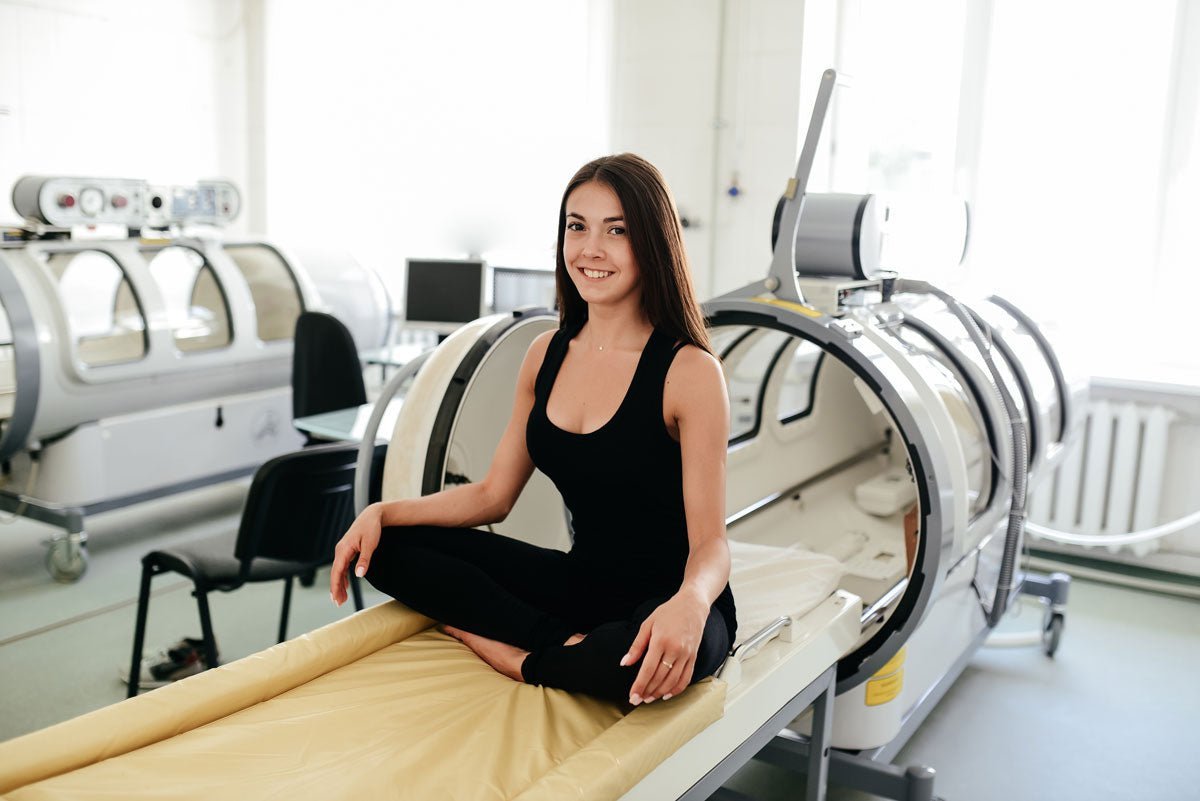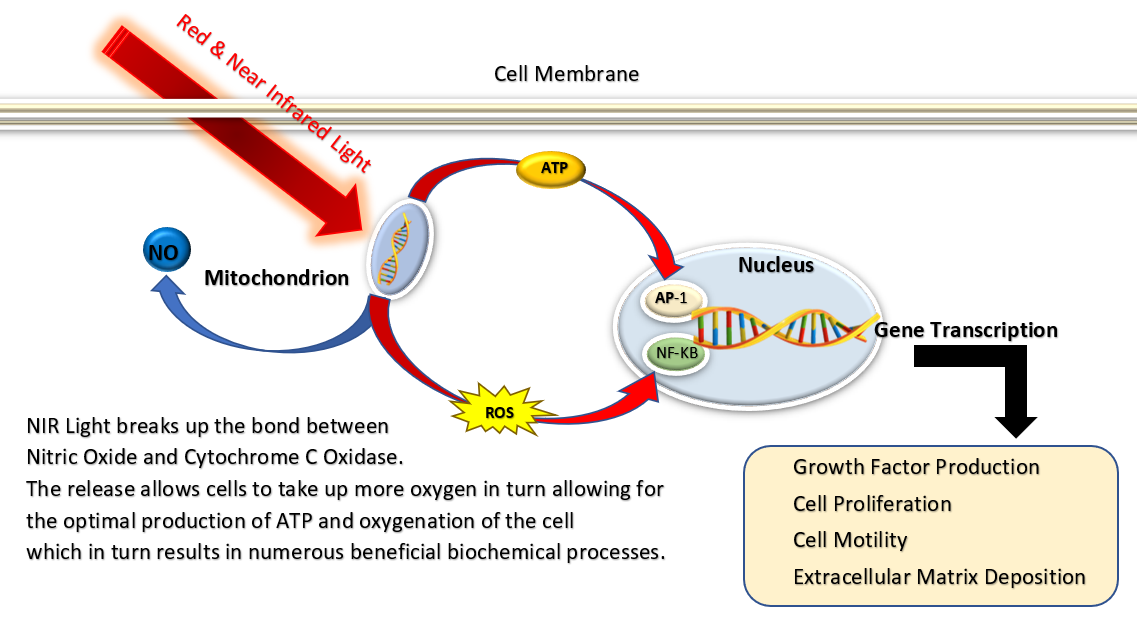
It’s an amazing time to be alive, isn’t it? We live in a time with constant innovation in healthcare with new therapies and improved outcomes for the people receiving them. We’re also seeing innovations in combining therapies for better outcomes. We have been paying close attention to those making forward strides by combining red light therapy (RLT) and hyperbaric oxygen therapy (HBOT), and we are really excited to be able to share with you what we’ve learned.
It’s worth noting that each of these therapies are already doing an amazing job on their own, which is something you may already be aware of. What we’ve been learning is that, for the optimization of oxygen delivery and tissue healing, the combination of these two therapies is showing amazing results for some.
So let’s take a look at how people are using it, what the results have been, and how you can use these two therapies together for improved health.
Let’s learn more about HBOT
We can go all the way back to 1662 to find the first instance of a physician using HBOT. Nathaniel Henshaw began putting his patients in a steel tube that he filled with pressurized air. A good start.
Fast forward a hundred years to 1775 and John Priestly makes an amazing discovery: oxygen exists! It wasn’t until another hundred years after that happened that a wise fellow named Paul Bert began to document his findings of hyperbaric oxygen and how it affects the nervous system.
The first big successes happened in 1937 and 1955 where hyperbaric oxygen was used to treat decompression sickness and to increase the effectiveness of radiation therapy for cancer treatments, respectively.
These days, HBOT is administered by putting someone in a pressurized environment and then having them breathe pure oxygen. But why would one do this?
Research has found that when one gets exposure to elevated atmospheric pressure, increasing the amount of oxygen that can be dissolved in the bloodstream is possible. As a result, many people are seeing great results in treating a wide variety of health conditions.
To get the treatment administered, you would get into a purpose-built chamber with pressurization levels greater than what you’d find at sea level. Get in, sit down, and the oxygen is slowly increased from one-and-a-half to three times what you’d find at seal level. While this is happening, you’ll be breathing in pure oxygen through a mask, kind of like a scuba diver.
The National Library of Medicine writes the following as explanation for how HBOT works:
HBO redistributes blood flow causing vasoconstriction in regions with increased perfusion and vasodilation in hypoxic ones. On the molecular level HBO effectuates preservation of ATP, downregulation of complex molecular cascades involving ß-2 Integrin and pro-inflammatory cytokines, upregulation of anti-inflammatory cytokines and growth factors as well as mobilization of stem cells. Since microorganisms are unable to compensate for the high levels of oxygen, HBO exerts an unspecific antibacterial action. In addition, a reduction in leukocyte chemotaxis and an increase of phagocytosis enhance the efficiency of antibiotic treatment.
Which is all well and good, but what exactly does that mean? Putting it into layman’s terms, HBOT changes the way blood moves in the body. Where the blood flow is too high, it restricts blood vessels, and where it’s too low, it widens them. Once this is done, oxygen can be delivered to where it’s needed most — to tissues and organs that have been affected by injury, infection, etc.
HBOT is also effective at fighting inflammation and helping tissues grow by reversing the causes of the reactions the body has to those issues.
And to wrap up the NLM’s incredibly scientific explanation above, the other thing they’ve found is that HBOT helps to fight infections. As it turns out, bacteria really don’t care for the extra oxygen, so they give up and the body’s immune system takes over and fights the infection more aggressively.
There is such a wide variety of applications for HBOT these days that it would be foolhardy for us to begin to attempt listing them all. That said, we’ll say that it’s seen promise in the healing of wounds, fighting carbon monoxide poisoning, dealing with brain injury and strokes, and even helping to heal bone fractures.
It’s quite amazing what scientists and health professionals have learned about the different applications of HBOT. And while that’s true, the combination of the two treatments is still a relatively new practice. As such, there’s not yet a lot of research on the subject.
That said, many clinics around the world have begun to offer the combination of treatments, and we’re excited to learn more as time goes by!
An expert on red light therapy combined with hyperbaric
Dr. Zayd Ratansi is a specialist who has been treating patients with both red light therapy and HBOT for almost 25 years. He has found interesting ways of combining RLT and HBOT for a variety of use cases.
Dr. Ratansi stresses that hyperbaric treatments are gradual, that one builds up and starts to see the effects over a period of time. When he needs to treat a patient for a very localized issue, that’s when he combines the two.
With red light therapy, we know that we may be able to generate an increase in cellular energy production, improve blood flow, and get an anti-inflammatory effect with pain relief.
When it’s necessary to target an area that requires special attention, that’s when he combines the two treatments, getting the best of both of those worlds. Depending on the severity of the issue being treated, Dr. Ratansi may treat that patient with both therapies by treating them before entering the chamber. With other patients, he uses the light therapy after the patient exits the HBOT chamber. You can hear him talk about his practice in the video below.
What we found really interesting is that Dr. Ratansi is using this combination of treatments as a preventative measure for athletes, especially with those who have a high rate of injury like UFC fighters or football players, for example. It’s also being used in pre-surgery protocol in order to prepare patients in a way that helps them recover faster.
When talking about the difference between the two, Dr. Ratansi said the following on the “How to Hyperbaric” podcast:
“[With RLT] you’re actually promoting function with blood flow, energy, metabolic activity, and nutrients… but the difference is that I can target [with RLT], whereas hyperbaric is the whole body. We just keep doing it, frequency, frequency, frequency. [It] takes time and the organs start developing from that. If we just want to focus on one area to start off with or even during a long series of hyperbaric, that’s where we can take advantage of the light therapy.”
So, where Ratansi uses the combination of the two therapies most frequently is when healing is where localized treatment is needed and the combination of the two can help the body to promote its own healing activities.
Where we think there is real potential—and Dr. Ratansi mentions this, as well— comes from the ability of red light therapy to help bring more oxygen to cells. Here’s a handy little guide in image form, below.

Under modern living conditions which can create stressors on the body, resulting in oxidative stress, one of the side effects of which is that nitric oxide gets “stuck” together with Cytochrome C Oxidase. Red light helps it get "unstuck" and the result is that the Cytochrome C Oxidase can now take up oxygen instead. The freed up Nitric Oxide the acts as a vasodilator and helps increase blood flow.
Add extra oxygen to the mix with hyperbaric treatment before or after, you’re creating a better environment for oxygenation, which, in turn, creates a better environment for the body to heal itself more efficiently.
To quote Bob Hope, “Now we’re cooking with gas!”
Should you combine red light therapy and hyperbaric?
The answer is going to be different for everyone, of course. However, if you feel like you might be a candidate for the combination of treatments, it’s certainly worth discussing it with your healthcare professional.
With the ways that HBOT helps the body heal itself in combination with the potentially regenerative effects of red light therapy, it’s certainly worth looking into it in more detail!
Looking for a red light therapy device to add to your existing treatment? Curious about how they work? Check out our devices here and get started!
